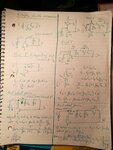mirror_pole
Member level 3
Hello guys,
im analysing the simple flipped voltage follower current mirror :
(Fig.3a on the third page)
I tried to analyse the closed loop transfer function by applying Rosenstark method and got confused. From the picture node x is the input and node y the output. If i chose Transistor M2 to be the independant source I get G,infinity=0 . Does this mean the "ideal" gain equals 0 in this case or did i missunderstand something? Is this maybe somehow connected to ideal properties of transimpedance amplifiers, since it is the case here?
If i chose M1 to be the independant source i get a G,infinity which is frequency dependant. From my professors script i read that in this case one cannot use the return ratio T(s) to make a statement concering step response and i would really like to know why. He says that G,infinity has to be a real number.
In this paper the loop gain is calculated by cutting this loop and applying a V,test at the gate of M2. This is actually the same thing if you calculate T(s) with Rosenstark by making M2 the independant source (and in this case G,infinity is 0, so a real number). So does this mean from this calculation i can make a statement concerning open loop poles and zeros on the basis of T(s)?
Im really confused about the use of rosenstark with multiple dependand sources because i dont know exactly what return ratio i can use. Maybe someone is experienced enough to help me here with my thoughts.
I would be really gratefull.
edit: thinking about it it maybe makes sense why G,infinity=0 . If i think about M2 as the feedback network here i can say that the current through M1 is the error term and idealy it has to be as low as possible. So in the ideal case the error current is zero which means that there is no voltage drop at the output and therefore G,infinity is zero. Does it makes sense?
im analysing the simple flipped voltage follower current mirror :
(Fig.3a on the third page)
I tried to analyse the closed loop transfer function by applying Rosenstark method and got confused. From the picture node x is the input and node y the output. If i chose Transistor M2 to be the independant source I get G,infinity=0 . Does this mean the "ideal" gain equals 0 in this case or did i missunderstand something? Is this maybe somehow connected to ideal properties of transimpedance amplifiers, since it is the case here?
If i chose M1 to be the independant source i get a G,infinity which is frequency dependant. From my professors script i read that in this case one cannot use the return ratio T(s) to make a statement concering step response and i would really like to know why. He says that G,infinity has to be a real number.
In this paper the loop gain is calculated by cutting this loop and applying a V,test at the gate of M2. This is actually the same thing if you calculate T(s) with Rosenstark by making M2 the independant source (and in this case G,infinity is 0, so a real number). So does this mean from this calculation i can make a statement concerning open loop poles and zeros on the basis of T(s)?
Im really confused about the use of rosenstark with multiple dependand sources because i dont know exactly what return ratio i can use. Maybe someone is experienced enough to help me here with my thoughts.
I would be really gratefull.
edit: thinking about it it maybe makes sense why G,infinity=0 . If i think about M2 as the feedback network here i can say that the current through M1 is the error term and idealy it has to be as low as possible. So in the ideal case the error current is zero which means that there is no voltage drop at the output and therefore G,infinity is zero. Does it makes sense?
Last edited:
